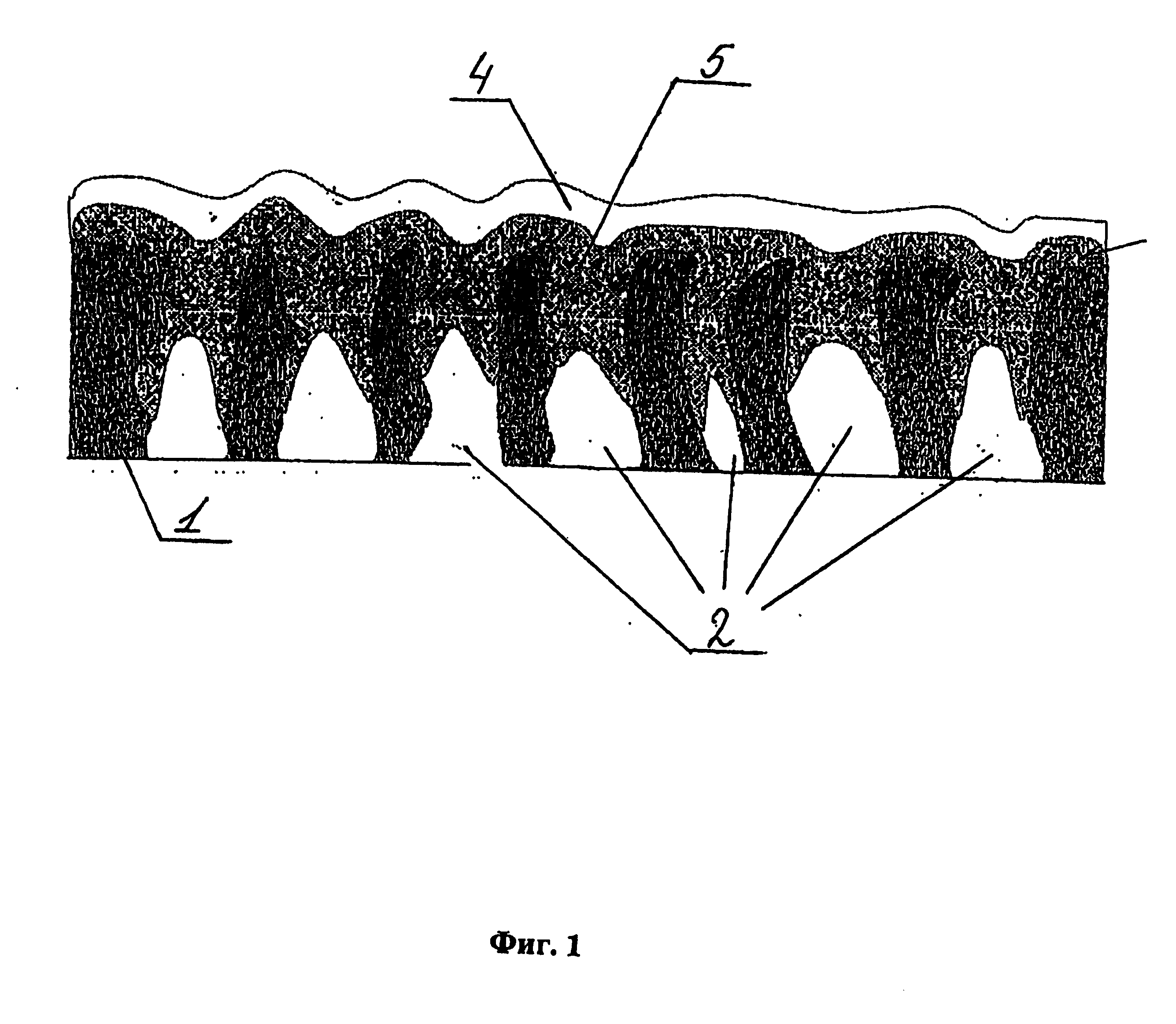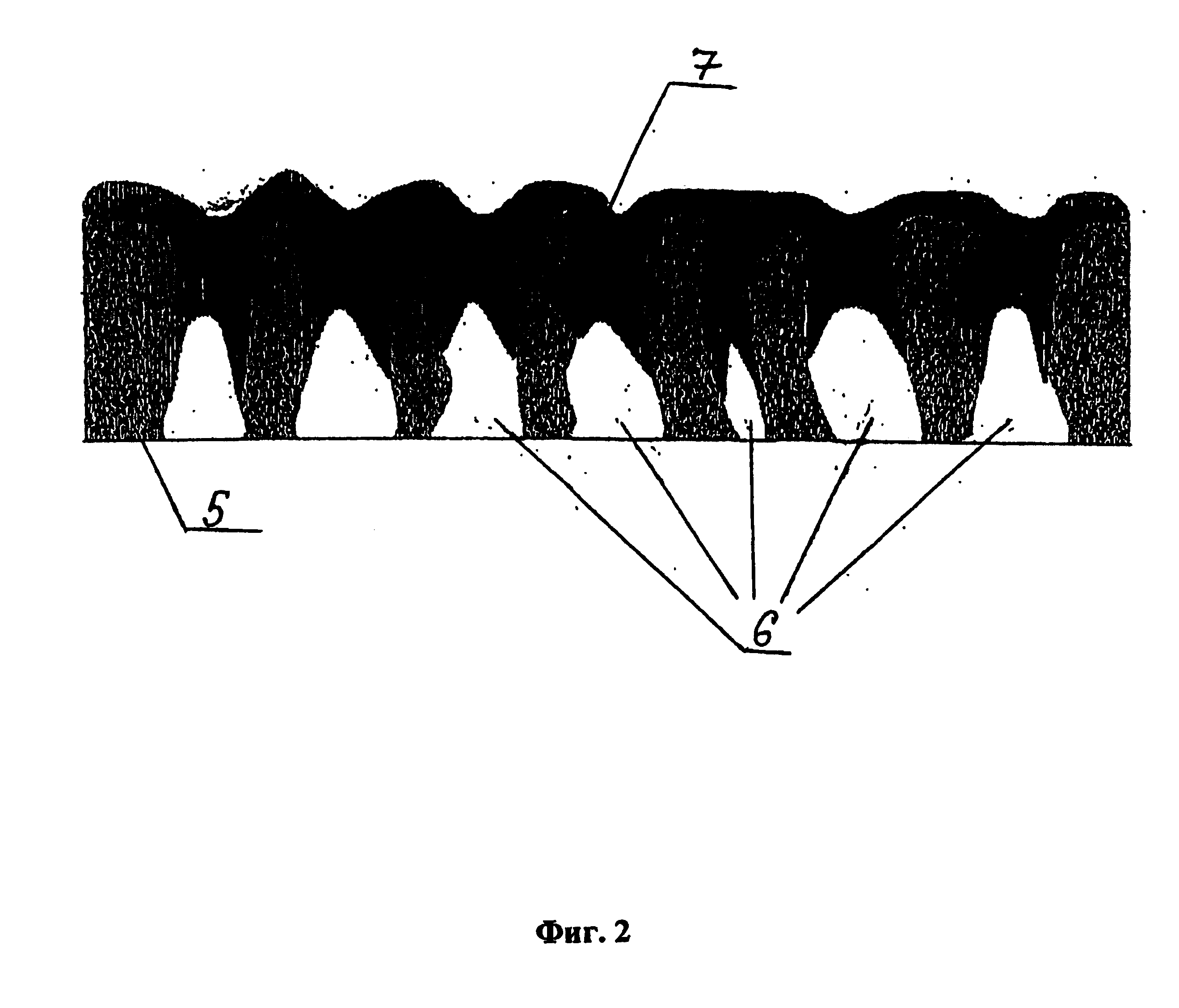Zirconium dioxide-based electrode-electrolyte pair (variants), method for the production thereof (variants) and organogel
a technology of zirconium dioxide and electrodeelectrolyte, which is applied in the direction of fuel cell auxiliaries, coatings, fuel cells, etc., can solve the problems of high cost of terbium, decrease the thickness of electrolyte layers, and the electrode-electrolyte pair cannot achieve the objective, etc., to achieve high efficiency, high efficiency, and economic advantage and durable fuel cells
- Summary
- Abstract
- Description
- Claims
- Application Information
AI Technical Summary
Benefits of technology
Problems solved by technology
Method used
Image
Examples
example 1
[0150] Organogel for the production of electrolyte of the ZrO2—Y2O3 system, e.g., ZrO2-3 mole % Y2O3 (3YZS being tetragonal partially stabilized zirconium dioxide) and ZrO2-8 mole % Y2O3 (8YSZ being cubic stabilized zirconium dioxide).
example 1.1
[0151] Zr and Y carboxylates with concentrations of 1.0 mole / l are produced by extraction of water salts of zirconium and yttrium to a mixture of carbonic acids with the general formula H(CH2—CH2)nCR′R″—COOH, where R′ is CH3, R″ is CmH(m+1) and m is from 2 to 6, with an average molecular weight of 140-250. The excess quantity of carbonic acids act as solvent. Zr and Y carboxylates are mixed in proportions corresponding to the stoichiometric composition ZrO2-3 mole % Y2O3 or ZrO2-8 mole % Y2O3.
[0152] The solutions of each carboxylate corresponding to the 3YSZ and 8YSZ compositions are mixed with 3-100 nm sized nanometric particles with the 3YSZ and 8YSZ compositions, respectively. The volume ratio of the nanometric particles is 85% of the organic liquid volume.
[0153] Organogel according to Example 1.1 is used for the production of the inner nanoporous three-dimensional 3YSZ or 8YSZ composition electrolyte layer on metallic, metalloceramic or ceramic electrodes with pore sizes from ...
example 1.2
[0154] Solution of Zr and Y carboxylates with concentrations of 1.0 mole / l as in Example 1.1 corresponding to the 3YSZ and 8YSZ compositions is produced.
[0155] The solutions of each carboxylate corresponding to the 3YSZ and 8YSZ compositions are mixed with 3-100 nm sized nanometric particles with the 3YSZ and 8YSZ compositions, respectively. The volume ratio of the nanometric particles is 5 to 20% of the organic liquid volume.
[0156] Organogel according to Example 1.2 is used for the production of the dense outer 3YSZ or 8YSZ composition electrolyte layer on the surface of the inner nanoporous three-dimensional electrolyte layer based on doped zirconium dioxide or on the surface of any other sublayer.
PUM
| Property | Measurement | Unit |
|---|---|---|
| grain size | aaaaa | aaaaa |
| grain size | aaaaa | aaaaa |
| pore sizes | aaaaa | aaaaa |
Abstract
Description
Claims
Application Information
 Login to View More
Login to View More - R&D
- Intellectual Property
- Life Sciences
- Materials
- Tech Scout
- Unparalleled Data Quality
- Higher Quality Content
- 60% Fewer Hallucinations
Browse by: Latest US Patents, China's latest patents, Technical Efficacy Thesaurus, Application Domain, Technology Topic, Popular Technical Reports.
© 2025 PatSnap. All rights reserved.Legal|Privacy policy|Modern Slavery Act Transparency Statement|Sitemap|About US| Contact US: help@patsnap.com


